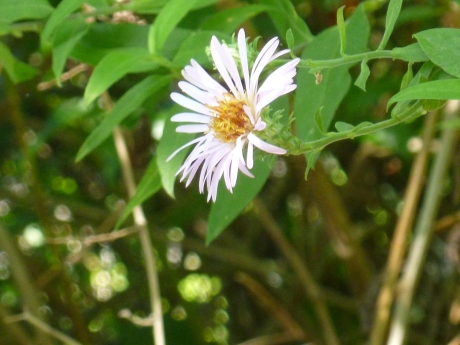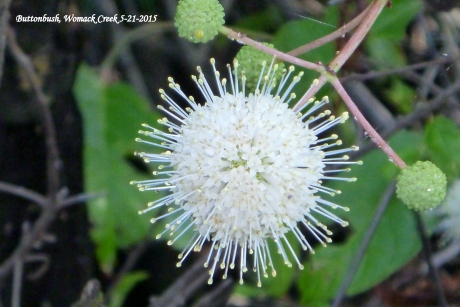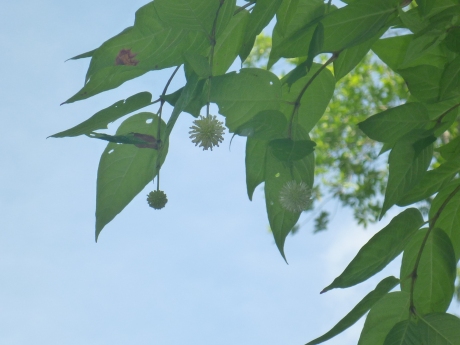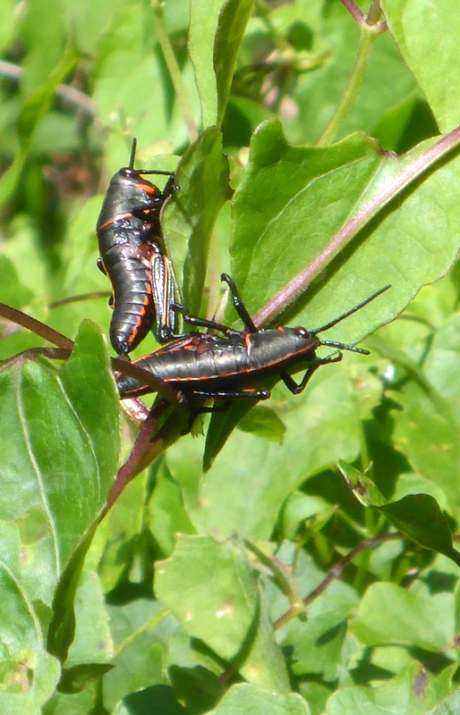
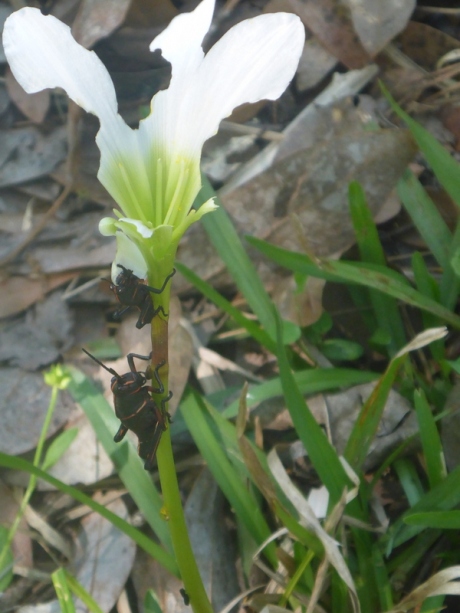
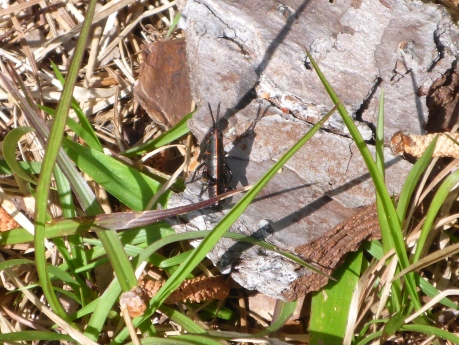
Romalea microptera (Romalea guttata)
Size: adult female 50-70mm (2-2.8″), males 43-55mm (1.7-2.2″)
Location: Southeastern US, broad range in low, wet areas in pastures and woods and along ditches. In north Florida from about March to November.
Food: broad variety, but prefers broad-leafed plants. Polyphagous — eats small amounts of a large variety of plants. In Florida can create problems in citrus groves, vegetable plots and landscape ornamentals.
Life cycle: One generation per year, with eggs over wintering (this stage can be as long as 8 months), egg laying begins about one month after reaching adult hood, usually the summer months. Eggs are deposited in soil located in drier areas although adults prefer damp or wet habitats.
Predators: tachinid fly (Anisia serotina). Most birds and lizards avoid these insects, except loggerheard shrikes (Lanius ludovicianus) will capture them, impale and cache the grasshoppers on barbed wire and return when the toxins have degraded.
Generally the adult is dull yellow color, but in North Florida adults remain black.
The common name describes the walking and crawling behaviour of the grasshopper. “Lubber” is from an old English word meaning lazy or clumsy. Novice seamen were called “landlubbers”.

